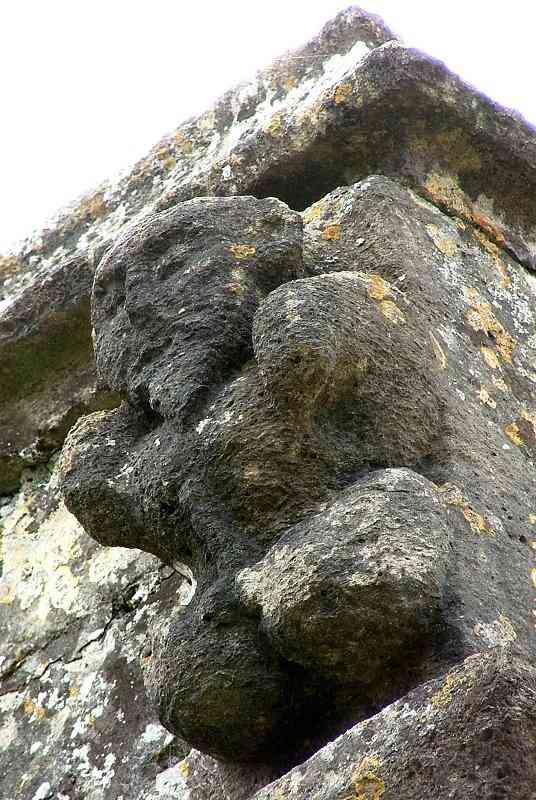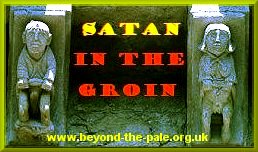|
Painswick (Gloucestershire)
The fracture of the limbs is consistent with the figure having been a typical Romanesque acrobat, as is the naturalistic treatment of the genitals and anus - for not all Romanesque exhibitionists had exaggerated genitals. The head is also Romanesque in appearance. Its striations are typical of sandstone weathering. It is, moreover, on a quoin. One or two Romanesque exhibitionists are on quoin-corbels amongst a series of figurative corbel-carvings, but the placing of the figure on a quoin is notably characteristic of many Irish sheela-na-gigs, which suggests some kind of affinity between the Painswick Romanesque male and sheela-na-gigs, contrary to theories which exclude males from their argument. 'The Painswick Man' is very different from "The
Abson Man" who is himself quite an enigma.
|
photo by John Harding |

